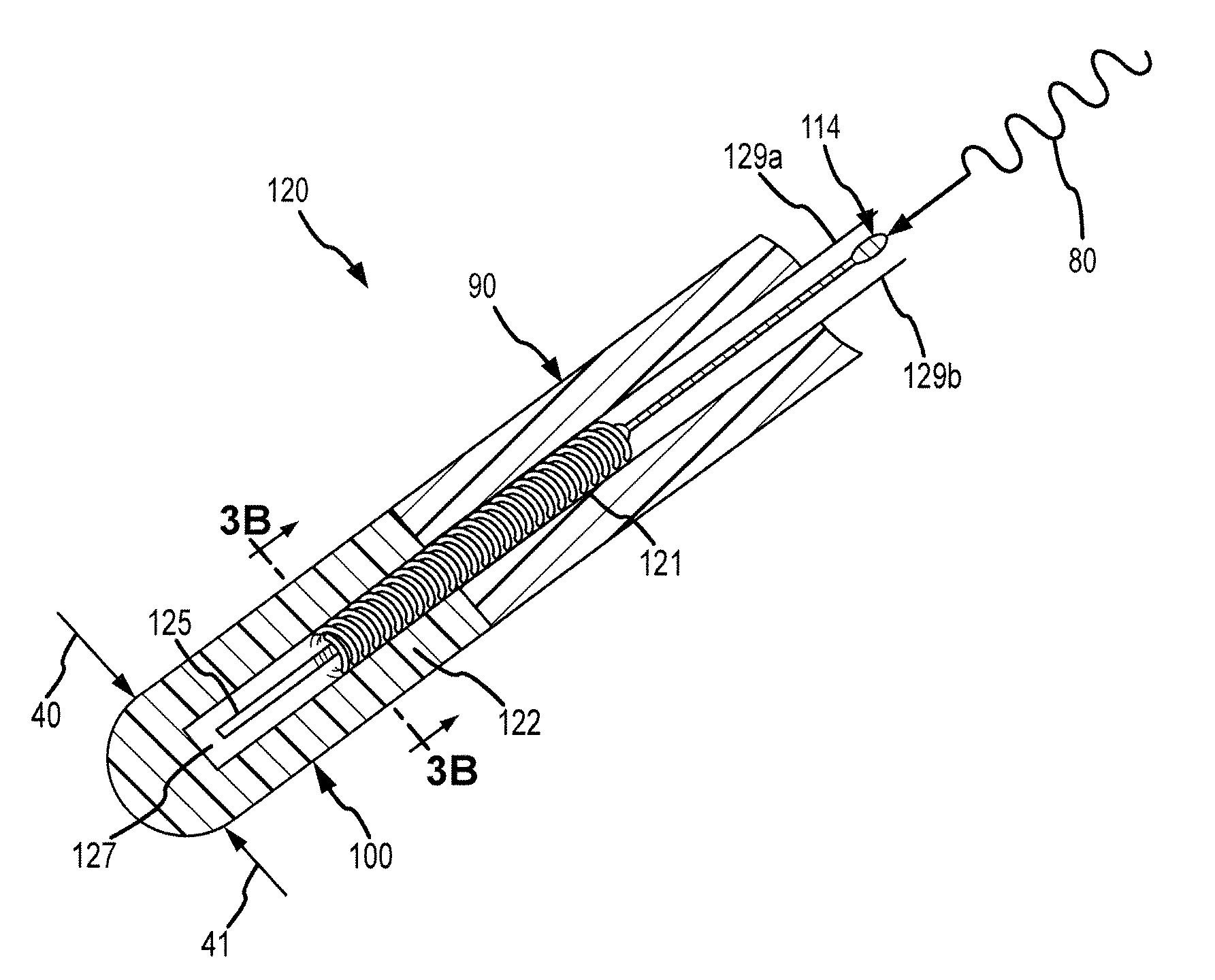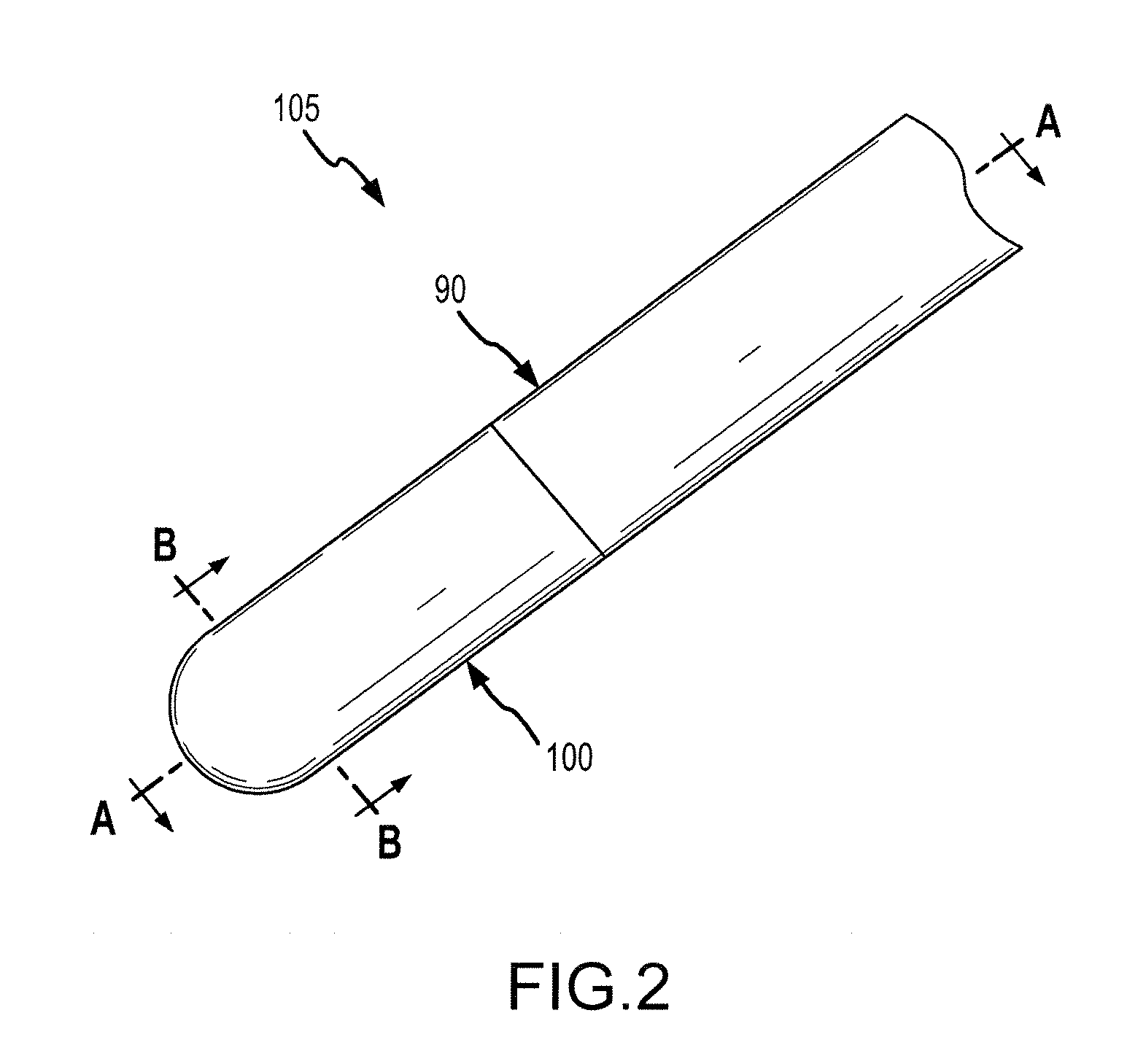Contact Sensing Flexible Conductive Polymer Electrode
a flexible, conductive polymer electrode technology, applied in the field of electrophysiology and medical devices, can solve the problems of poor lesion formation, inaccuracy of tissue mapping, and inability to reliably determine tissue contact using conventional fluoroscopy techniques, and achieve the effect of minimizing the occurrence of false positive contact readings
- Summary
- Abstract
- Description
- Claims
- Application Information
AI Technical Summary
Benefits of technology
Problems solved by technology
Method used
Image
Examples
Embodiment Construction
[0040]A flexible conductive polymer electrode for ablation is disclosed, along with methods for using and methods of manufacturing the flexible conductive polymer electrode. Of course, it is within the spirit and scope of the present invention to use the flexible conductive polymer electrode for other applications, including, but not limited to, electrophysiology studies such as mapping and diagnosis.
[0041]As used herein, the term “conductive polymer” refers to a polymer that is formed using at least some conductive materials and which is conductive even in its quiescent state such that the polymer may conduct sufficient energy to ablate tissue. The present invention will work with various conductive polymer materials. For example, U.S. Pat. No. 6,999,821, which is hereby incorporated by reference as though fully set forth herein, discloses intrinsically conductive and conductor-filled polymers that may be useful in the present invention. As disclosed therein, intrinsically conducti...
PUM
| Property | Measurement | Unit |
|---|---|---|
| thick | aaaaa | aaaaa |
| frequency | aaaaa | aaaaa |
| radio frequency | aaaaa | aaaaa |
Abstract
Description
Claims
Application Information
 Login to View More
Login to View More - Generate Ideas
- Intellectual Property
- Life Sciences
- Materials
- Tech Scout
- Unparalleled Data Quality
- Higher Quality Content
- 60% Fewer Hallucinations
Browse by: Latest US Patents, China's latest patents, Technical Efficacy Thesaurus, Application Domain, Technology Topic, Popular Technical Reports.
© 2025 PatSnap. All rights reserved.Legal|Privacy policy|Modern Slavery Act Transparency Statement|Sitemap|About US| Contact US: help@patsnap.com



